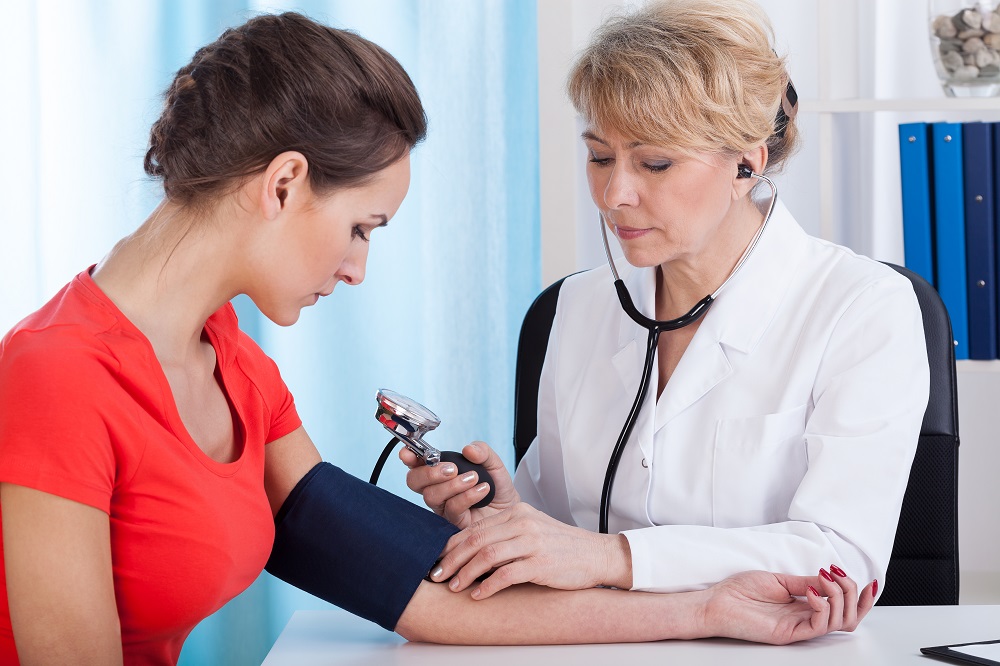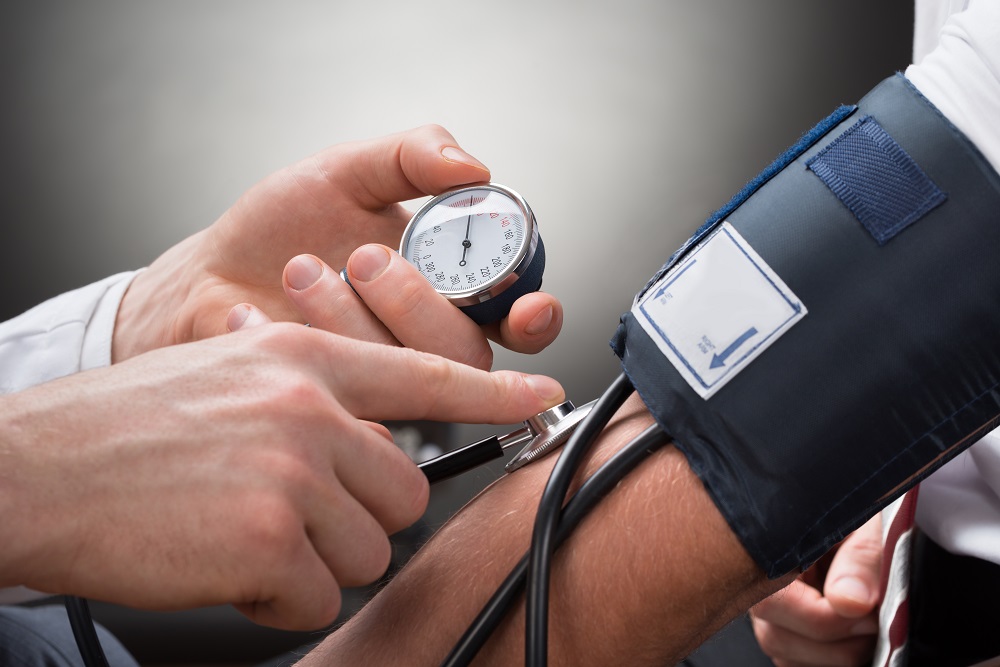Low blood pressure may be a sign for an underlying problem, especially when it drops suddenly or when it’s accompanied by any of the following symptoms:
- Dizziness
- Fatigue
- Thirst
- Fainting
- Poor concentration
- Blurry vision
- Confusion
- Weakness
- Nausea
- Cold, pale skin
- Rapid, shallow breathing
- Depression
Depending on the causes, physicians distinguish different types of low blood pressure, such as:
- Orthostatic or postural hypotension – a sudden drop in blood pressure when a person stands up from a sitting position or after lying down. Orthostatic hypotension may occur due to dehydration, prolonged bed rest, diabetes, burns, excessive heat, pregnancy, heart problems, burns, large varicose veins and neurological disorders. The condition is particularly common in older adults. Younger, healthy people may experience orthostatic hypotension after sitting with their legs crossed for a long time or after working for a while in a squatting position.
- Postprandial hypotension – a sudden drop in blood pressure after eating. Mostly older adults are affected by this condition, especially those with high blood pressure or autonomic nervous system disorders, e.g. Parkinson's disease.
- Neurally mediated hypotension – a drop in blood pressure after standing for a long time. The condition results in signs such as dizziness, nausea and fainting. It mostly affects young people. The cause might be a miscommunication between the heart and the brain.
- Multiple system atrophy with orthostatic hypotension (Shy-Drager syndrome) – This rare condition leads to progressive damage to the autonomic nervous system, which controls involuntary functions, e.g. blood pressure. The characteristic feature of shy-drager syndrome is severe orthostatic hypotension in combination with very high blood pressure when lying down.
Medical conditions that may cause low blood pressure:
- Pregnancy
The circulatory system expands rapidly during pregnancy, and blood pressure might drop. - Heart problems
Very low heart rate, heart valve problems, heart attack and heart failure might result in low blood pressure. - Endocrine disorders
Parathyroid disease, low blood sugar and sometimes diabetes may trigger low blood pressure. - Dehydration
Fever, vomiting, severe diarrhea, overuse of diuretics and strenuous exercise can lead to dehydration. However, hypovolemic shock is a life-threatening complication of dehydration. A sudden drop in blood pressure and a reduction in the amount of oxygen reaching the tissues might cause death within a few minutes or hours. - Blood loss
Blood loss after a major injury or internal bleeding may result in a severe drop in blood pressure. - Severe infection
If an infection enters the bloodstream, it may cause a life-threatening drop in blood pressure (septic shock). - Severe allergic reaction
Certain foods, medications, insect venoms, etc. can result in a life-threatening allergic reaction with breathing problems, itching, swollen throat and a drop in blood pressure. - Lack of vitamins B-12 and folate
Blood pressure may drop if the body does not produce enough red blood cells.
Medications that may cause low blood pressure, e.g.:
- Diuretics (water pills)
- Alpha and beta blockers
- Some drugs for Parkinson's disease
- Some antidepressants
- Viagra
There is always a risk of injury, if a person passes out and falls to the ground. In patients with severely low blood pressure, the condition may deprive their body of enough oxygen to carry out its normal functions, resulting in damage to heart and brain.
Mild cases of low blood pressure with no signs or only a brief dizziness when standing usually don’t have to be treated.
However, if a patient shows symptoms of low blood pressure, the doctor has to find out what caused it because it is necessary to treat the primary health problem rather than hypotension itself. If it occurs due to certain medications, the dose has to be changed or the patient has to stop taking it.
If the doctor cannot find the cause for hypotension, he tries to raise the blood pressure and reduce the symptoms. This can happen in various ways, depending on the patient’s age, health status and type of hypotension by:
- Eating more salt – after having spoken to the doctor (sodium raises blood pressure, but may also result in heart failure, particularly in older people)
- Drinking more water (liquids increase blood volume and may prevent dehydration)
- Wearing compression stockings (might reduce pooling of blood in the legs)
- Taking drugs (e.g. fludrocortisone or midodrine)
Preventive measures
There are quite a few measures to stabilize the regulation ability of the blood vessels and prevent low blood pressure:
- Regular exercise
- Balanced diet
- High-sodium diet
- At least 2,5 to 3 liters of liquids daily (mineral water rich in sodium, fruit and vegetable juice, herbal and fruit tea)
- Contrast shower (alternating hot and cold water)
- Brush massage
- Avoiding fatigue


